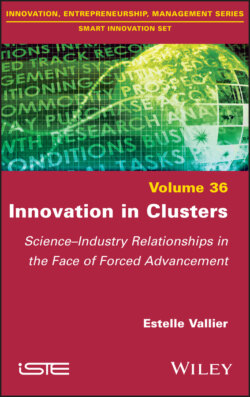Читать книгу Innovation in Clusters - Estelle Vallier - Страница 14
I.2.2. From the cluster concept to its realization: between adoption and resistance
ОглавлениеThis book therefore rightly proposes to observe and report on the application of the cluster concept within a specific field. The aim is to revisit the construction of this public action mechanism, which seems to be unanimously accepted, at least in discourse on innovation policies, and to confront it with the dynamics of cooperation in one of these clusters. The purpose of the book is thus reminiscent of the study of the “editing work” of foreign examples (Sahlin and Wedlin 2008). This work consists, particularly in the field of science policy, of adapting a public action mechanism already implemented abroad to the context of another country, region, city, etc. The authors speak of operations of decontextualization and recontextualization of international policies in order to inscribe them into another national or local framework. The work of editing allows us to focus on the actors who construct and “edit” these foreign examples, and on the importance of the latter in the adoption of funding policies, in particular. Séverine Louvel and Mathieu Hubert have particularly shown the role of foreign examples in the implementation in France of nanoscience and nanotechnology steering (Louvel and Hubert 2016). In the same way, this book proposes to revisit the construction of the cluster concept on an international scale and to find out who the main authors and disseminators are. However, it also proposes to report on the reality experienced by those who work within these geographical clusters.
To do this, the second part of the book draws more on the literature on the sociology of work than the first part, which is mainly based on the sociology of science; effectively, how to impose a cooperation system on individuals who work for different employers (public laboratories, start-ups, SMEs, private laboratories, associations, etc.) and who, what is more, belong to two different social fields: scientific and economic. The field survey shows that these individual affiliations are often in contradiction with the cluster’s objective of promoting synergies. Recourse to the work of sociologists who have already highlighted this type of paradoxical injunction specific to modern management (Linhart 2010, 2015; de Gaulejac and Hanique 2015) or disembodied management (Dujarier 2015) has made it possible to study the effects of the networking system on the experience and practices of individuals in the context of the cluster.
